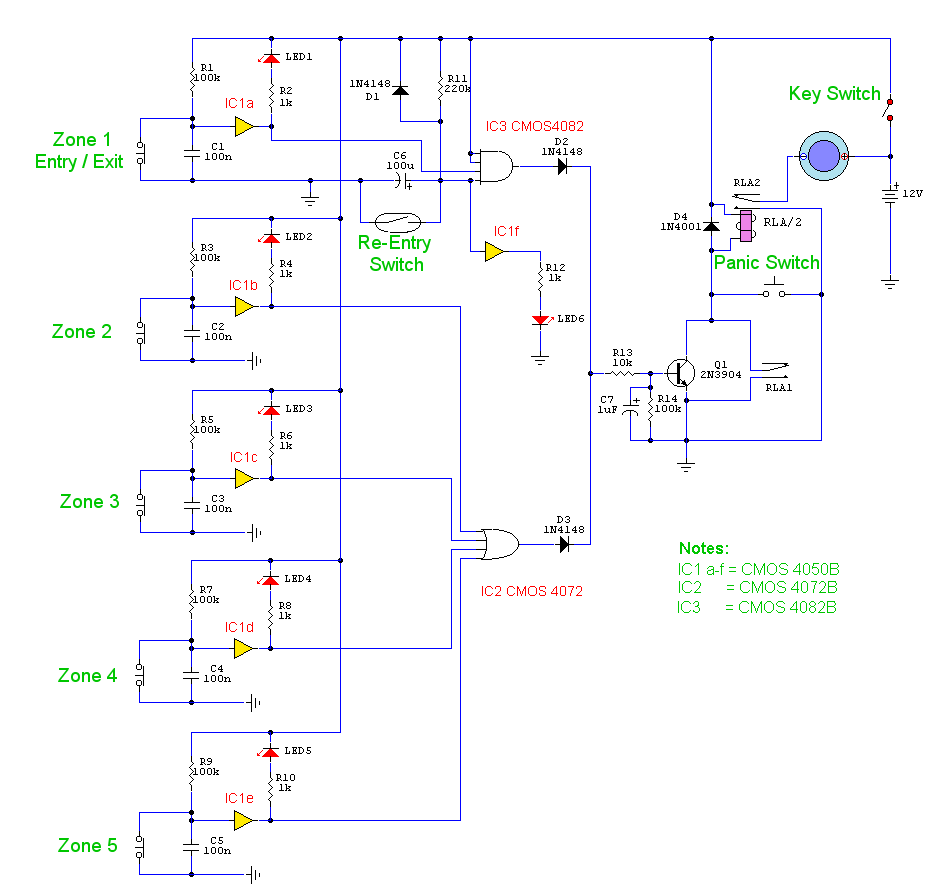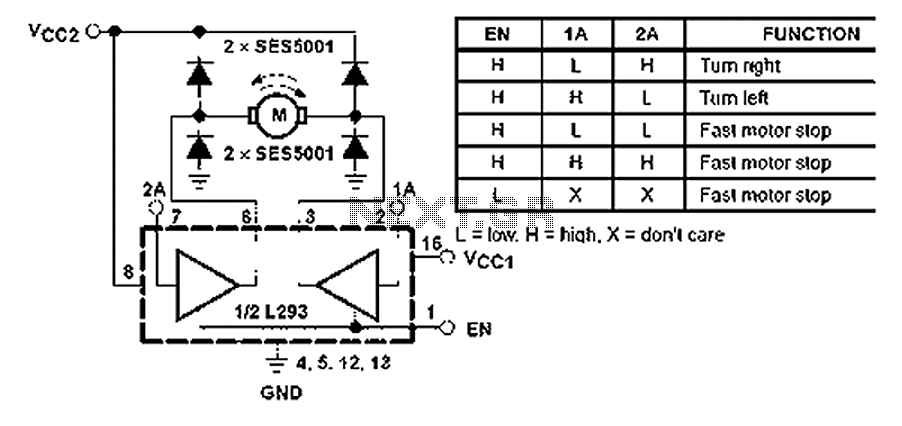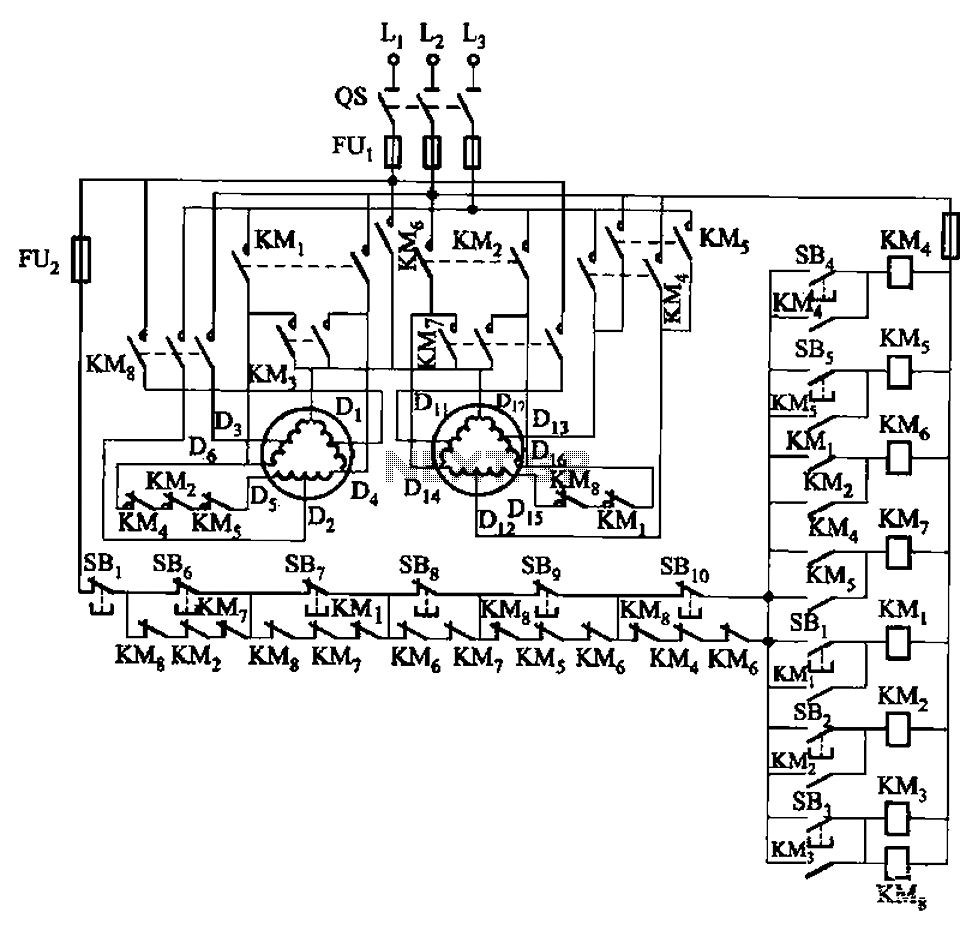
Human infrared remote sensing lamp circuit

The diagram illustrates a human infrared remote sensing lamp circuit. It utilizes the trace infrared heat emitted by humans to control the lamp's operation, allowing it to turn on or off remotely. This human infrared remote sensing lamp features high trigger sensitivity, capable of functioning at a distance of up to 10 meters, and possesses strong anti-jamming capabilities, effectively achieving full automation.
The human infrared remote sensing lamp circuit operates based on the principles of infrared detection. It typically consists of an infrared sensor, a microcontroller or comparator circuit, a relay or solid-state switch, and the lamp itself.
The infrared sensor detects the infrared radiation emitted by human bodies, converting it into an electrical signal. This signal is processed by the microcontroller, which determines whether the intensity of the signal exceeds a predefined threshold, indicating the presence of a human. If the threshold is met, the microcontroller activates a relay or solid-state switch, allowing current to flow to the lamp, thus turning it on. Conversely, if no infrared radiation is detected for a specified period, the microcontroller will deactivate the relay, turning the lamp off.
The circuit's design incorporates various components to enhance its functionality. For instance, adjustable sensitivity can be implemented using potentiometers, allowing the user to calibrate the detection range based on environmental conditions. Additionally, the circuit may include a timer function to prevent the lamp from turning on inadvertently due to small animals or other non-human infrared sources.
To ensure robust operation in diverse environments, the circuit may include filtering capacitors to mitigate noise and improve stability. The choice of components, such as the type of relay or solid-state switch, will depend on the lamp's power requirements and the expected load.
Overall, this human infrared remote sensing lamp circuit exemplifies an efficient solution for automatic lighting control, providing convenience and energy savings while maintaining high sensitivity and reliability.The diagram is human infrared remote sensing lamp circuit. It uses trace infrared heat sent out by human to remote control the open or close of lap. This human infrared remote sensing lamp trigger sensitivity is very high ( can work in 10m distance), anti-jamming ability is strong, and ittruly achieces full automation.. 🔗 External reference
The human infrared remote sensing lamp circuit operates based on the principles of infrared detection. It typically consists of an infrared sensor, a microcontroller or comparator circuit, a relay or solid-state switch, and the lamp itself.
The infrared sensor detects the infrared radiation emitted by human bodies, converting it into an electrical signal. This signal is processed by the microcontroller, which determines whether the intensity of the signal exceeds a predefined threshold, indicating the presence of a human. If the threshold is met, the microcontroller activates a relay or solid-state switch, allowing current to flow to the lamp, thus turning it on. Conversely, if no infrared radiation is detected for a specified period, the microcontroller will deactivate the relay, turning the lamp off.
The circuit's design incorporates various components to enhance its functionality. For instance, adjustable sensitivity can be implemented using potentiometers, allowing the user to calibrate the detection range based on environmental conditions. Additionally, the circuit may include a timer function to prevent the lamp from turning on inadvertently due to small animals or other non-human infrared sources.
To ensure robust operation in diverse environments, the circuit may include filtering capacitors to mitigate noise and improve stability. The choice of components, such as the type of relay or solid-state switch, will depend on the lamp's power requirements and the expected load.
Overall, this human infrared remote sensing lamp circuit exemplifies an efficient solution for automatic lighting control, providing convenience and energy savings while maintaining high sensitivity and reliability.The diagram is human infrared remote sensing lamp circuit. It uses trace infrared heat sent out by human to remote control the open or close of lap. This human infrared remote sensing lamp trigger sensitivity is very high ( can work in 10m distance), anti-jamming ability is strong, and ittruly achieces full automation.. 🔗 External reference





